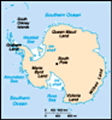Advertisement
Published: February 21st 2019
5. Almirante Browns Station Paridise Harbour Antarctic Peninsula
We woke to a beautiful day with glassy water. We have been so lucky with the weather. Again, it was out in the zodiacs so that we could explore Brown’s Station, an intermittently operating Argentine research centre in summer. It began life as a single refuge hut in 1947/48 at the time when Britain and Argentina were competing with each other to determine occupation as part of their territorial claims. It was developed into a year-round Argentina naval meteorological station in 1950/51 and continued in the role up to 1959/60 when I was closed. It reopened in 1964/65 as a scientific station operated by The Argentine Antarctic Institute. A marriage took place on the station in February 1975.
Operations at the station came to an abrupt end on 12 April 1984 when the main living accommodation was destroyed by fire. It transpired that the base doctor on being informed they would be required to spend another winter at the station, resorted to arson shortly after relief ship had departed in the hoe it would turn back and rescue everyone. However, the ship did not return, and the
base personnel had to await the fortuitous appearance of the US research vessel Hero to evacuate the site. The station was operated intermittently as a summer only station since. Nowadays there is usually a small party present in the summer months.
Our zodiac landing was on a very rocky, slippery approach but the staff were always there to rescue you for those who needed it.
Today we saw our first Crabeater and Leopard seals. One Leopard seal was seen on a sheet of ice floating around the Harbour. The Gentoo penguin colony was small in size as we walked through their colony on the way for our up-mountain trek.
Taking 2 walking poles, we trekked up the side of the snow-covered mountain for spectacular views of Paradise Harbour. The water was like a mirror. Our photos look as though we were on top of the world.
Before leaving the Island we met the paediatric-trained doctor from the Argentina Antarctica research base, who said it was her first time in the Antarctic and was enjoying it immensely.
We saw a large group of Arctic
cormorants perched on the side of the craggy rocks, nesting and flying around the area.
We decided to do a long shore-line cruise on the way back to the ship. This turned out to be yet another smorgasbord of whales, particularly humpback. As we weaved our way through beautifully shaped icebergs, we found the whales feeding, breeching, showing their flukes and generally showing their presence. Was this going to be a day as good as the previous day. It certainly was.
The weather was starting to change as sometimes it seemed to do in the afternoon. The water was no longer mirror-like and the wind was starting to mount so we returned to the ship, ready for happy hour. This is certainly where we exchanged our stories of the days and looked at each other’s photos. We had some amazing photographers amongst us, and I was always satisfied with mine. We spotted the Chile Base near Paradise Harbour on our way back to the ship.
6. Neko Harbour, Antarctic Peninsula
Beautiful Neko Harbour like so many other sheltered coves and corners in the Peninsula, once was a place
of grand scale slaughter. Named for the whaling factory ship ‘Niko’ operating in this region between 1911-24, frequently moored in the protected bay. A terrible stench of rotting carcasses enveloped the site on summers days, but today descendants or relatives of the whales flensed and tried out here do occur from December and throughout summer, mainly humpback and minke whales.
Our hike this afternoon was shorter than our morning hike but just as beautiful scenery. What was special about this hike, was the view of the cliffs of ice. We heard cracking and groaning of the ice and surrounding glaciers. I noticed an area of columns of ice so got out my camera and started filming, just as calving of ice thundered into the Neko Harbour. The mini-tsunami was created in a little cove and as the wave reached the opposite side, the penguins scurried for safety. It was a spectacular site.
We then hopped into the zodiacs to see more of the spectacular ice shapes on mountain and in the sea.
We again saw lots of Humpback whales as we said goodbye to the Gentoo Penguins.
Advertisement
Tot: 0.06s; Tpl: 0.015s; cc: 7; qc: 23; dbt: 0.0274s; 1; m:domysql w:travelblog (10.17.0.13); sld: 1;
; mem: 1.1mb
























